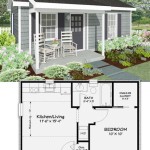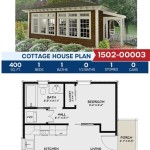House Plans For Victorian Homes: A Guide to Historical Accuracy and Modern Living
Victorian homes, characterized by their ornate details, asymmetrical designs, and romantic aesthetic, hold a timeless appeal. For those seeking to build or renovate a home reflecting this architectural style, understanding Victorian house plans is crucial. Such plans offer a blueprint, not just for the structure itself, but also for capturing the era's distinct character while accommodating the needs of contemporary living.
The Victorian era, spanning from 1837 to 1901 during Queen Victoria's reign, encompassed a diverse range of architectural styles. These included Gothic Revival, Italianate, Second Empire, Queen Anne, Stick-Eastlake, and Romanesque Revival. Consequently, Victorian house plans aren't a monolithic entity but rather a collection of styles, each with its own defining features. Understanding these sub-styles is the first step to selecting or adapting a suitable plan.
Acquiring accurate Victorian house plans can involve several approaches. Historic preservation societies and architectural archives often hold original blueprints and documentation. These primary sources offer invaluable insights into authentic construction techniques and design elements. However, working directly from historical plans can present challenges related to modern building codes, energy efficiency, and contemporary lifestyle requirements. Therefore, many prefer to work with architects or designers specializing in Victorian architecture. These professionals can create new plans based on historical precedents, incorporating modern amenities while preserving the Victorian aesthetic.
Key Elements of Victorian House Plans
Victorian house plans are readily identifiable through several recurrent features. Understanding these elements is essential for both selecting a pre-existing plan and collaborating with an architect on a custom design. The features listed below are not exhaustive, and their prevalence varies depending on the specific Victorian sub-style.
Asymmetrical Design: A hallmark of many Victorian styles, particularly Queen Anne, is the absence of strict symmetry. Facades often feature projecting gables, towers, bay windows, and porches, creating a visually dynamic and irregular profile. This asymmetry extends to the interior layout, often resulting in varied room sizes and configurations.
Elaborate Ornamentation: Victorian architecture revels in detail. This includes intricate trim work, such as gingerbread trim along eaves and porches, decorative brackets, spindlework, and stained-glass windows. The level of ornamentation varies depending on the homeowner’s budget and the specific style, but it remains a defining feature. Interior ornamentation includes detailed plasterwork, wainscoting, and elaborate fireplaces.
Steep Roof Pitches and Gables: Steeply pitched roofs are common, often punctuated by gables of various sizes and shapes. These gables frequently feature decorative bargeboards and other ornamentation. Towers and turrets, especially prevalent in Queen Anne and Second Empire styles, further contribute to the complex roofline.
Large Windows: Victorian homes typically incorporate large windows to maximize natural light. Bay windows, often found in living rooms and dining rooms, are a characteristic feature, adding depth and visual interest to the facade. Stained-glass windows, particularly in entryways and parlors, are another common decorative element.
Use of Color: Victorian homes are known for their use of color, often employing a palette of multiple hues to accentuate architectural details. While the specific colors varied over time, and by region, common choices included deep reds, greens, blues, and earth tones, often contrasted with lighter shades for trim work.
Adapting Victorian House Plans for Modern Living
While the historical accuracy of Victorian house plans is important for many homeowners, adapting them to meet the demands of contemporary living is equally crucial. This involves careful consideration of space planning, functionality, and the incorporation of modern amenities. Balancing historical integrity with modern comfort is the key to a successful Victorian renovation or new construction project.
Open Concept Living: Victorian homes typically featured compartmentalized spaces, with distinct rooms for specific functions. Many modern homeowners prefer a more open concept layout, particularly for the kitchen and living areas. Adapting Victorian plans to incorporate this requires careful removal or modification of interior walls. Load-bearing walls must be carefully assessed and addressed with appropriate structural support.
Modern Kitchens and Bathrooms: Victorian kitchens and bathrooms differed significantly from their modern counterparts. Adapting these spaces requires careful consideration of space planning and the integration of modern appliances and fixtures. Maintaining the Victorian aesthetic can be achieved through the selection of appropriate cabinetry, hardware, and tilework.
Energy Efficiency: Victorian homes were often drafty and inefficient by modern standards. Modernizing Victorian house plans invariably involves improving energy efficiency through insulation, high-performance windows, and efficient heating and cooling systems. While these improvements may not be visible from the exterior, they are essential for creating a comfortable and sustainable living environment.
Accessibility: Victorian homes often featured multiple stories accessed by stairs, which can present challenges for individuals with mobility issues. Adapting Victorian house plans to incorporate accessibility features, such as ramps or elevators, requires careful planning and consideration of building codes.
Sourcing Victorian House Plans
Finding suitable Victorian house plans requires diligence and a clear understanding of the desired style and scope of the project. Several resources are available, each offering different advantages and considerations.
Historic Preservation Societies and Architectural Archives: These organizations often possess original Victorian house plans and related documentation. These primary sources offer invaluable insights into authentic construction techniques and design elements. However, obtaining and interpreting these plans can require specialized knowledge and expertise.
Architects and Designers Specializing in Victorian Architecture: Working with an architect or designer specializing in Victorian architecture is often the most effective approach. These professionals possess the knowledge and experience necessary to create new plans based on historical precedents, incorporating modern amenities while preserving the Victorian aesthetic. They can also assist with obtaining necessary permits and ensuring compliance with building codes.
Online Resources and Plan Providers: Numerous online resources and plan providers offer Victorian house plans for sale. These plans vary in quality and accuracy, so it's important to carefully evaluate the reputation and credentials of the provider. Look for plans that include detailed drawings, specifications, and material lists. It is also important to verify that the plans comply with local building codes.
Custom Design: For those seeking a truly unique Victorian home, working with an architect to create a custom design is the ideal solution. This approach allows for complete control over the design process, ensuring that the resulting home reflects the homeowner's individual tastes and preferences. While this is often the most expensive option, it also offers the greatest potential for creating a truly exceptional Victorian home.
When reviewing potential plans, consider the following factors: the overall size and layout of the home, the number of bedrooms and bathrooms, the presence of desired architectural features, and the suitability of the plans for the specific building site. It is also important to review the plans with a contractor to ensure that they are feasible and cost-effective to build.
Obtaining accurate and well-designed Victorian house plans is a crucial first step in creating a home that captures the historical charm and elegance of the Victorian era while meeting the needs of modern living. By understanding the key elements of Victorian architecture, considering the challenges of adapting historical plans for contemporary use, and utilizing the available resources, homeowners can realize their vision of a truly exceptional Victorian home.

58 Best Victorian Floor Plans Ideas House Vintage

Pin By Chriss Flagg On Architecture Victorian House Plans Mansion Floor Plan

Luxurious Victorian Home Plan Builder Ready 3225
Victorian House Plans Home Design Gml D 756 19255

Victorian Plan 3 140 Square Feet 4 Bedrooms 5 Bathrooms 963 00797

Victorian House Plans Home Design Gml D 756 19255

Luxury 2 Story Victorian Style House Plan 3357

11 Stunning Civil War Era Victorian House Floor Plans From The 1860s Americana

Victorian Style House Plan 4 Beds 5 Baths 5250 Sq Ft 132 255 Dreamhomesource Com

Victorian Style House Plans








